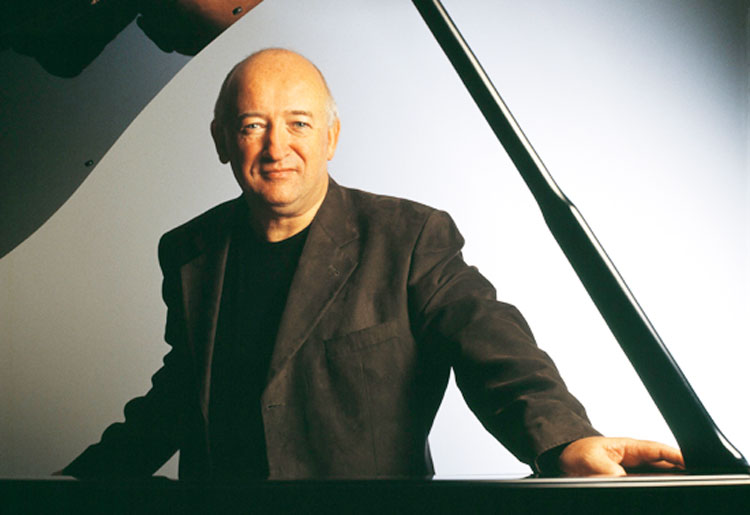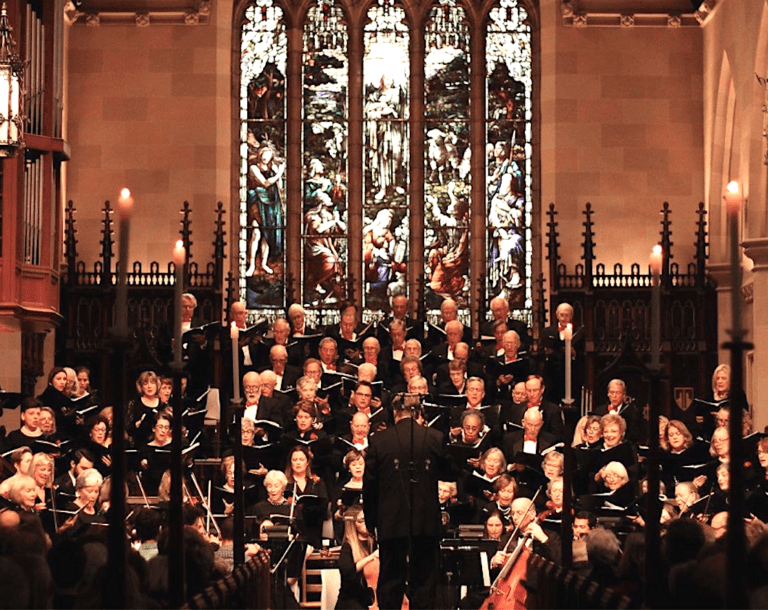
By Linda Phillips

Celebrating its 59th season, the Greenwich Symphony took its audience across three centuries of musical composition (not in sequence), and performed somewhat lesser-known works of three major composers: Wolfgang Amadeus Mozart, Ludwig van Beethoven and Igor Stravinsky.
The concert was graced by a return of the excellent Irish pianist John O’Conor in a flawless performance of a quieter, more poetical Beethoven in his Piano Concerto #4. It was a perfect match of artist and composition, and Mr. O’Conor’s first movement cadenza alone left the audience astounded, breathless.
Conductor David Gilbert welcomed guests with informative remarks about the works, placing them in historical and personal context: Mozart was only sixteen when he composed his Divertimento, a charming piece in seven sections (18th century). Stravinsky’s Danses Concertantes signaled a return to a neoclassical mode for the modernist composer, and was written in 1942 as the world went to war (20th century). And Beethoven’s 4th Piano Concerto (19th century) defied form, in opening with a quiet piano passage rather than an orchestral statement to introduce the soloist.
The orchestra began the major key Mozart Divertimento with a consonant section featuring flutes and bassoon, which elided into a lilting song-like section, very 4/4 time, with a French horn passage, against prominent flute and bassoon, punctuated by little orchestral conversations. The fourth section featured a whizzing solo for Concertmaster Kristof Wytek, as a “cuckoo” motif was answered orchestrally, French horns played with impressive triple tonguing, oboe and bassoon sounded, and the tempo changed to triple meter for the final section.
The orchestra pared down for the five Stravinsky Dances Concertantes, in which strings struck stridently against the French horns, the kettle drums adding drama. Heard were some Copland-esque passages, the trumpet sounded, there was a clarinet obbligato and the woodwinds played around.
Dances Concertantes is an edgy urban work, tantamount to walking down the street in New York City, and being confronted with unexpected sounds, unusual changes of context, a blaring taxi horn, an interesting essence, a beautiful scene, laughter, a human interchange. The work, percussive and often pounding, is a feast of musical and harmonic energy. It was beautifully performed by the Greenwich Symphony musicians.
After intermission, soloist John O’Conor came to the stage to enthusiastic applause, bowed, and seated himself at the piano, beginning the quiet, lilting statement of theme of Beethoven’s Piano Concert #4. The first movement, Allegro moderato, was taken up and restated in the orchestra, at full complement. Mr. O’Conor’s touch was silken, gauzy. His brilliant runs were most impressive, and when the soloist launched into the long cadenza, (unusual for an opening movement) he was on fire, communicating its emotion fully, with stunning technical skill.
Movement 2, Andante con moto, began with an assertive orchestra against a quiet, poetical piano. In traditional rondo form, it is simpler, characterized by a very rhythmic theme. This movement, likened to “Orpheus taming the Furies” featured a lyrical piano countering the orchestra.
The third movement, Rondo.Vivace, featured a buoyant theme, with broken chords in the piano, pizzicato strings and clarinet joining. Mr. O’Conor’s reading showed great verve, feeling and nuance, and the shading and blending of the Greenwich Symphony was perfect, in complete harmony with the soloist.
The Piano Concerto #4 was performed at its debut by Beethoven himself, and it was its composer’s last performance, owing to his increasing deafness. Mr. O”Conor’s performance undoubtedly rivaled — or surpassed —the composer’s own.
The soloist was given three curtain calls and a standing ovation, and Conductor Gilbert applauded and congratulated both Mr. O’Conor and the orchestra, whose accomplished players stood to take their well deserved accolades.
The next performance of the Greenwich Symphony will be on November 19 and 20, and will feature the Shostakovich Symphony #9. For tickets and information, go to www.Greenwichsymphony.org or call 203.869.2664




